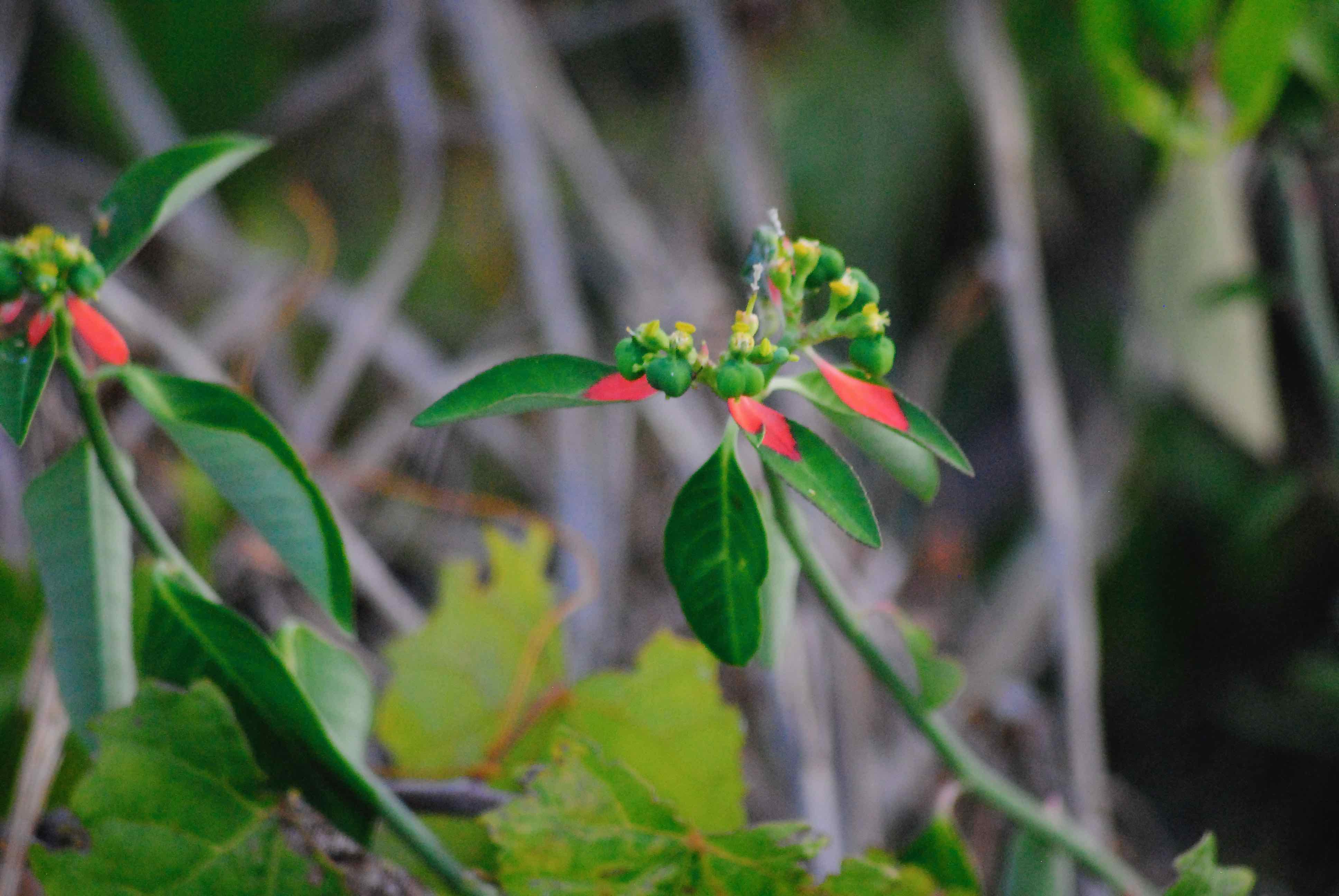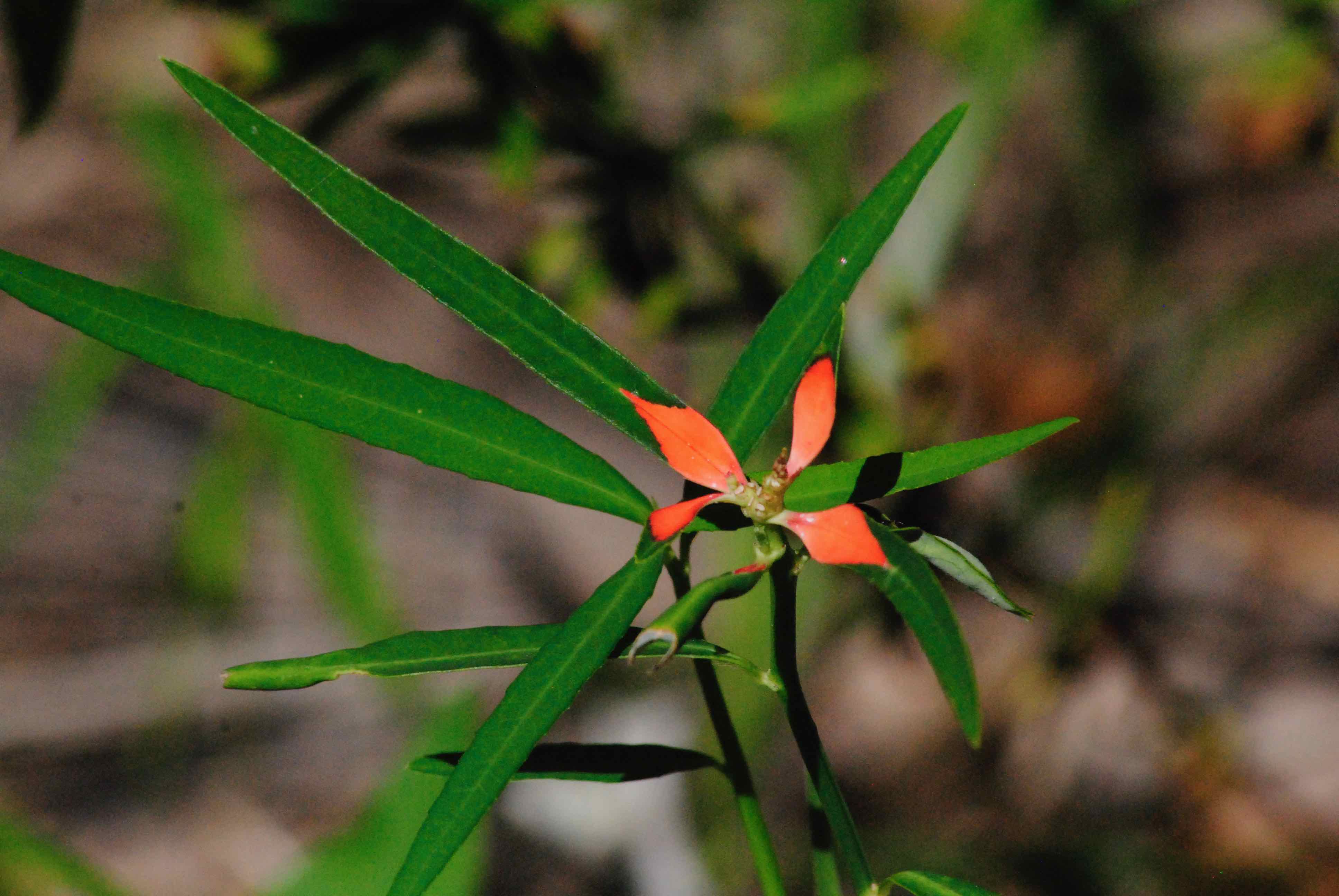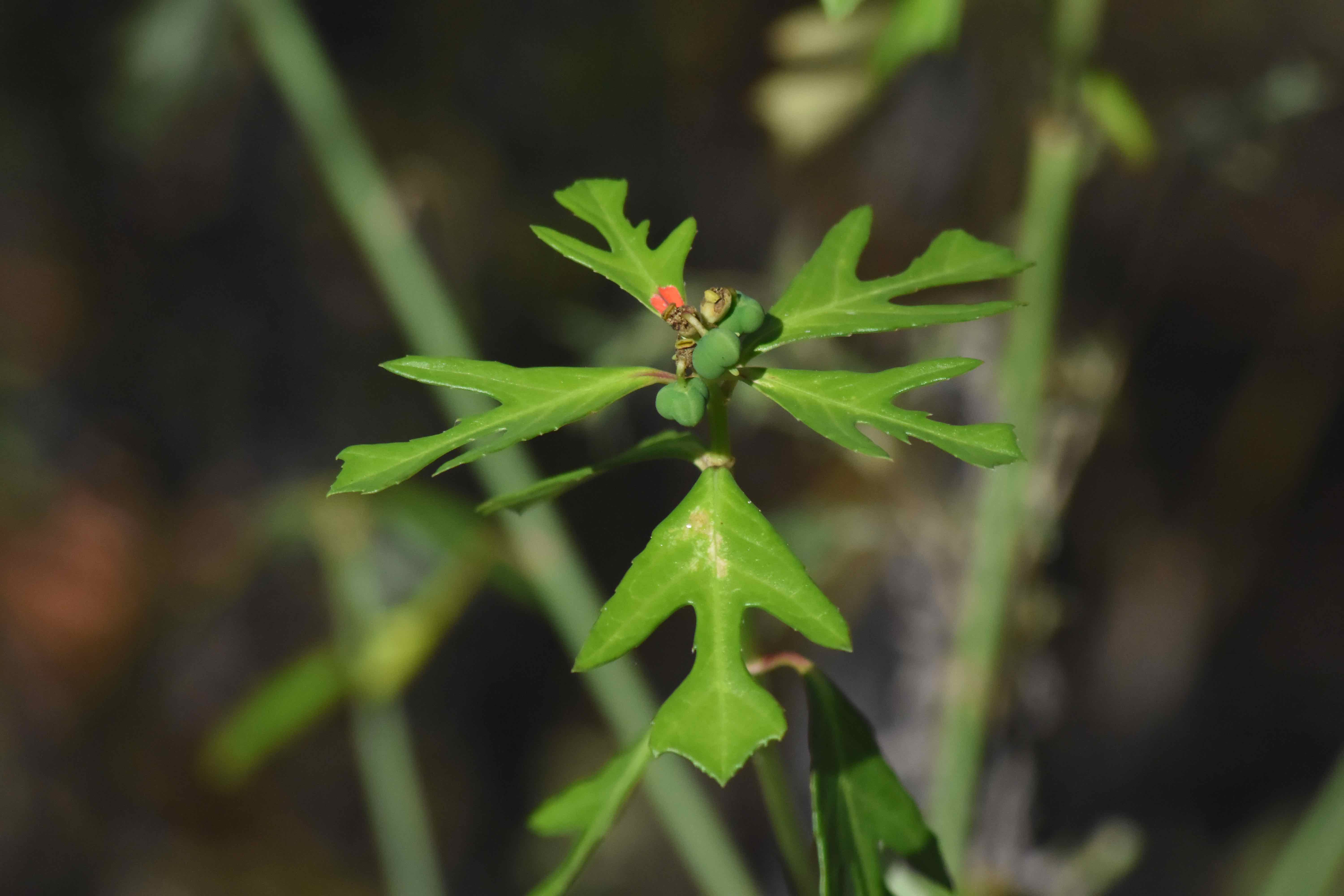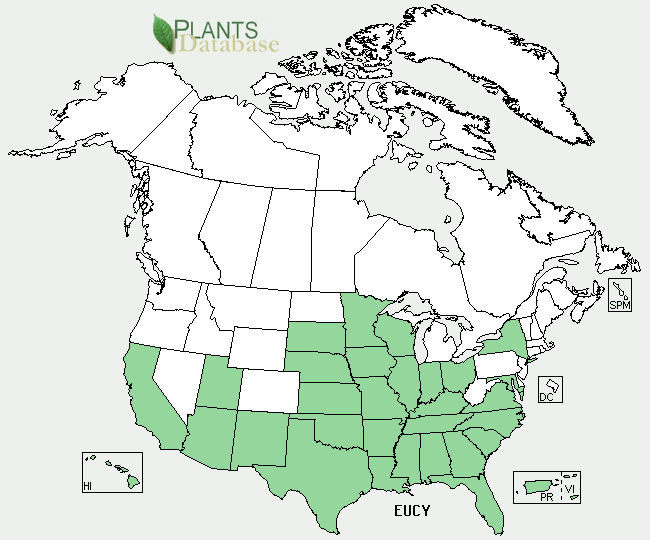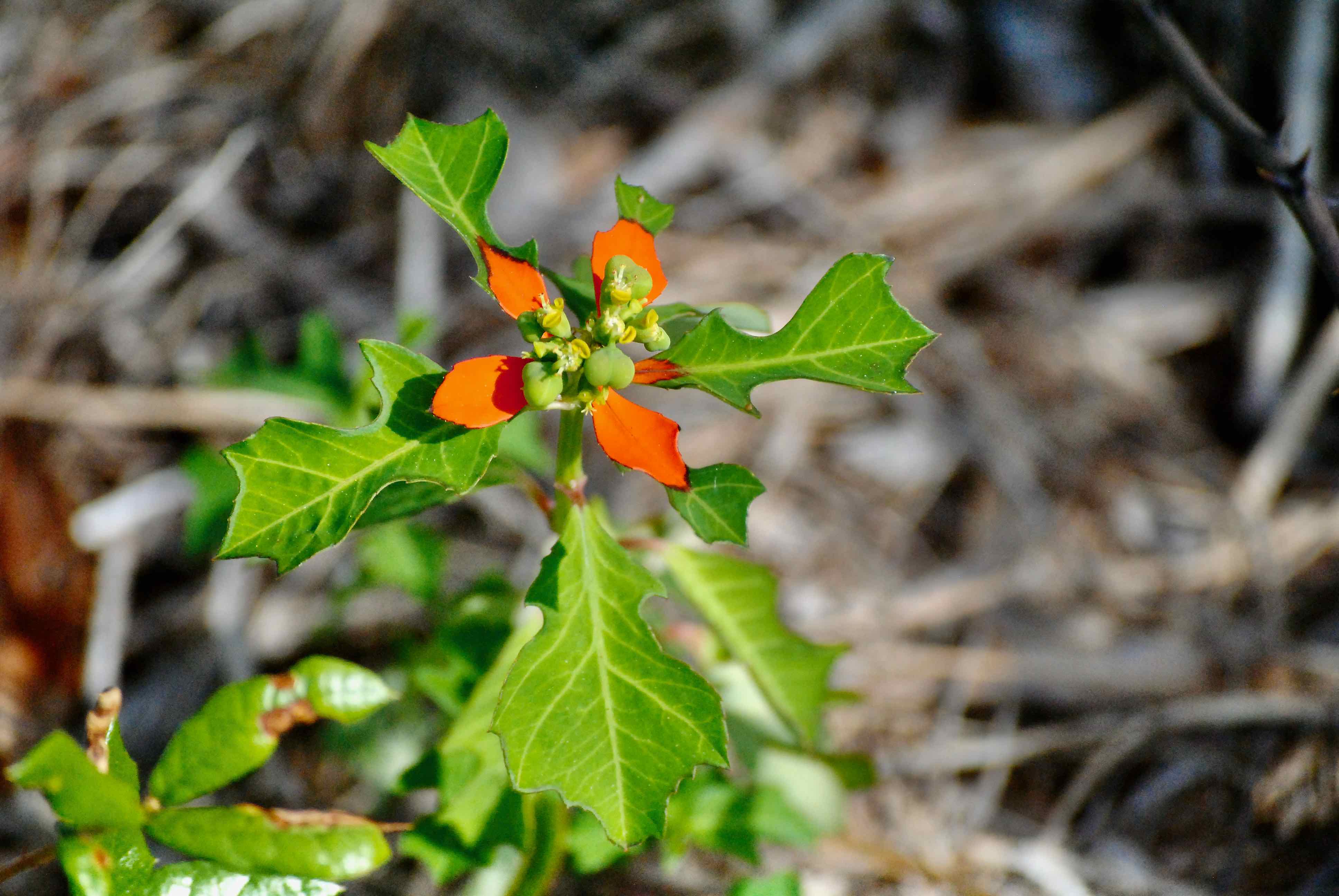
Painted leaf, photographed at Pawpaw Natural Area, Palm Beach Gardens, Palm Beach County, in March 2014.
Painted leaf, Euphorbia cyathophora, is also known as wild poinsettia, and if you take a close look at the plant — the shape of the leaves, the colorful bracts and the flowers — you'll see the similarities with the domesticated plant that adds so much to the holiday season.
And if the physical resemblance isn't enough to convince you of the relationship, consider this: one of Its alternative scientific names is Poinsettia cyathophora.
Painted leaf is Florida native and a common one at that, found in most of the state, and pretty much every county from Alachua south to the Keys. It's found throughout much of the United States as far north as Minnesota and on both coasts. It's also native to the Caribbean, Mexico, Central America and South America. Painted leaf is also grows in the Pacific and Indian Ocean basins, Asia and Australia, both as a cultivated plant and as a naturalized weed.
It's also related to the scourge known as fiddler's spurge, but painted leaf has a slightly more benign reputation. Both are sometimes called wild poinsettia, and both are often confused with each other. Fiddler's spurge, however, lacks painted leaf's colorful bracts.
Painted leaf can be more than three feet tall, with a thin stem. Leaves can vary in shape and are clustered at the top, along with the flower parts. The flowers themselves aren't much to look at, but they are surrounded by those bright reddish orange bracts.
Habitats include hammocks, pinelands, clearings and disturbed areas such as roadsides.
Painted leaf also has a poisonous milky sap that can irritate the skin. Some of its cousins are known to kill grazing animals and there's some fear that they might be cancer-causing as well. But little is known about the harmful potential of our guy. The odd thing with painted leaf is the sap contains agents that have been shown in lab tests to aid in healing wounds. According to a 2014 study done at a university in India, researchers found that painted leaf had both antibacterial and antifungal potential, including against both staph and salamonella germs. In the same study, an ointment prepared from painted leaf extracts aided in healing by reducing scarring.
It is used in gardens as an accent plant, but it can be overly aggressive. It can be grown from cuttings or seeds, and once established it will self-seed. Butterflies are attracted to the flowers; it is a host plant for the Ello sphinx moth. It's so aggressive, that in parts of the Pacific and Indian oceans, it has become a highly invasive pest, particulary in Australia and Fiji. It quickly spreads and can dominate an area, outcompeting natives for nutrients, water and space.
Other common names include fire-on-the-mountain, painted leaf spurge. Both painted leaf and fiddler's spurge are members of the spurge, or Euphorbiaceae, family. All members of the family have that latex sap, and most are poisonous, but some are also useful. The family produces rubber, castor and tung oils, and tapioca.
Click on photo for larger image
U.S. Department of Agriculture Distribution Maps


